The Complete Guide for Active Feet that Rely on Orthotics
If you’ve been using orthotics to keep foot pain at bay but are finding that you’re struggling to perform during pre-season training, or even maintain performance mid-season, because your foot pain has returned, then this guide is for you.
Orthotics are great when they work. However, for them to work and for you to get the most benefit you need to be wearing them for at least 80% of the time. They also have a finite life. So you have to continue to invest time and money into getting them checked to make sure they can continue to support you as intended. And this can create a problem.
People get busy, things get in the way, we forget to book the review appointment. Or maybe your podiatrist just never followed up with you. And it’s not until the return of foot pain and secondary symptoms, that orthotic users are reminded they haven’t really paid much attention to their orthotics at all… And by that time, it’s already affecting activity levels and the enjoyment one gets from being active.
Signs and Symptoms Your Orthotics Need Attention:
|
|
|
|
|
|
|
|
|
|
|
|
|
|
Our feet support our body and when they can’t function properly, then the rest of our body will suffer because of the way our body naturally compensates from the ground up.
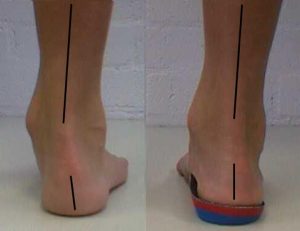 An orthotic works by artificially correcting mechanical changes and structural misalignment within the joints of the feet. They help reduce the additional forces and excessive stress being placed on the surrounding muscles, ligaments and tendons. And it’s so often that these soft tissues are compensating for these structural changes. Muscles, tendons, and ligaments that are overworking within the feet are commonly felt as inflammation and pain. Using an orthotic use can help to reduce this stress. By providing support when your feet can’t function at their best on their own.
An orthotic works by artificially correcting mechanical changes and structural misalignment within the joints of the feet. They help reduce the additional forces and excessive stress being placed on the surrounding muscles, ligaments and tendons. And it’s so often that these soft tissues are compensating for these structural changes. Muscles, tendons, and ligaments that are overworking within the feet are commonly felt as inflammation and pain. Using an orthotic use can help to reduce this stress. By providing support when your feet can’t function at their best on their own.
Factors that can contribute to structural misalignment within the feet:
|
|
|
|
|
|
|
|
|
|
|
|
|
Think about the plantar fascia for instance. For people who have a tendency for flat feet, the plantar fascia (the ligament that connects the heel to the front of the foot and supports the arch of the foot) becomes overworked and stretched. This is what causes responses of inflammation and pain because the ligament is working harder than it needs to. The orthotic helps reduce symptoms of pain and inflammation by creating an “artificial” arch, because the “natural” arch, through joint misalignment, has been compromised.
TIPS to make sure your orthotics can continue to keep you foot pain free during activity…
New Orthotics Tips:
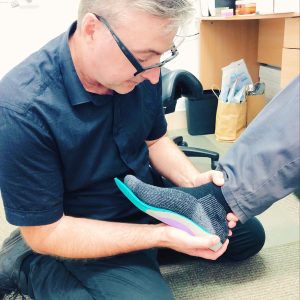
It will take approximately 1-4 weeks for you to become accustomed to wearing new orthoses. During this adjustment period there may be some discomfort in the muscles of the legs as they adapt to your new alignment. Sometimes the pressure of the orthotic in the arch of the foot can lead to skin blistering. To minimise discomfort and to assist you to care for your orthoses the following instructions will be helpful.
- Make sure you wear the correct orthotic on the correct foot …you may laugh but we have seen it happen!
- Break your new orthoses in slowly. As a guide wear the orthoses for one hour the first day, two hours the second day and increasing the time by one hour each day; so that by the end of the first week, you are wearing the orthoses seven hours a day. If you are comfortable, you can accelerate this process by wearing your orthoses for longer initially, or you may need to adapt more slowly, wearing the orthoses only half an hour each day initially. Let your body guide you. As a rule, children usually adapt more rapidly than adults.
- During the “break in” the orthoses should be worn with socks or stockings to minimise discomfort.
- Make sure the shoes you are planning to wear are compatible with your new orthotics. It is best to discuss with your podiatrist the different types of shoes that will suit you and your orthotics best, and things like the activity you’ll be using them for, the surface you’ll be playing on for your chosen sport/activity and your work requirements need to be considered too.
- Old shoes may have a wear pattern that can impact the function of your new or existing orthotics so if a certain pair of shoes don’t feel right then check the shoe, as it may be impacting the orthotic function.
- Do not wear the orthoses for sport until you have been able to wear them comfortably all day, every day for at least a week. This indicates that your muscles are adapting to their new functioning position.
- During break in and if your orthotic is not helping within 2-4 weeks from receiving them, it’s best to go back to your podiatrist for some adjustment/modification. And if you don’t feel you’re getting the answer/result you want, then seek out a second opinion. Sometimes the smallest of tweaks to the orthotic can make all the difference.
- Once they’re broken in and you feel good in them, aim to wear your orthotics for at least 80% of the time you spend weight bearing for best benefit.
Maintenance Tips:
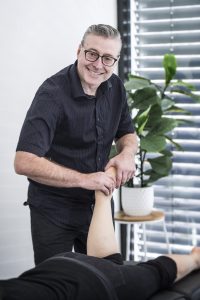
1. We recommend an annual orthotic and foot check at a minimum. Orthotics do wear over time so having at least an annual check-up is recommended so you can get the best value out of them…and to also make sure the orthotics are still suitable for your foot type because structural changes will continue to develop as we get older, through accidents, injuries, and the activities we perform whilst on our feet.
- If your pain starts to return after a while, it may be a sign that your orthotic is wearing out – so get them and your feet checked if in doubt, or if you start to notice small changes in the way your feet are feeling.
- Foot exercises can help you adapt to your orthotics and increase your comfort levels for those times you are unable to wear your orthotics i.e., in a dress shoe that they don’t fit in.
- Take your orthotics out of your shoes at night to allow them to dry out.
- The orthoses may be cleaned with soap and lukewarm water – hot water will damage them. Similarly wet shoes should be dried with the orthoses removed, as the moisture inside the shoe may damage the orthoses too.
- If the orthoses squeak in the shoes, powder the shoes with talcum powder.
- If the orthoses are broken or become damaged – notify your podiatrist at your earliest convenience.
This seems like a lot of work – Is there an alternative?
Well, if you don’t like wearing orthotics or aren’t happy about the impact it can have on your shoe choice, then keep reading because I’m about to reveal a natural treatment alternative that may be just the solution you are looking for.
Remember…
“Our feet support our body and when they can’t function properly, then the rest of our body will suffer because of the way our body naturally compensates from the ground up.”
The underlying cause of many foot pain problems is structural misalignment within the joints of the feet. When the joints of the feet aren’t sitting in their ideal position then our feet and our body will naturally compensate for these changes. The muscles, ligaments and tendons around these joints are then forced to work much harder than they need to, and when they do, they become inflamed and painful. And because our feet support us from the ground up, changes in the feet can cause the rest of the body to compensate to help keep us balanced and upright, not to mention changes in the way we may start walking because we are trying to avoid making the foot pain worse.
Yes. An orthotic can help relieve these symptoms, but the problem is that when you take them away, the problem still exists. You haven’t fixed the cause.
Orthotics are much like wearing glasses – you can see better when you’re wearing them but take them off, and your eyesight hasn’t been fixed…similarly, take the orthotic away and your pain is likely to come back!
Something to Consider – the Disadvantages of orthotics:
- Can be expensive when you consider customised versions, replacement & often needing multiple pairs.
- Need to wear them for 80% of the time you’re on your feet (and not just for sport).
- Modification and replacement often required due to further changes within the feet.
- May need to buy multiple orthotics to fit into different shoes and different activities.
- Orthotic insoles can restrict your shoe choices.
- Because the problem isn’t fixed you are unable to walk barefoot for very long or even at all.
- Low durability for “off-the-shelf” type orthotics due to wear and tear, how often you’re using them, and the type of activity.
- Not getting the right orthotic for your foot type.
- Can take time to wear them in.
- Children need more frequent checks and replacements as their feet grow.
So, what is the alternative?
By addressing the underlying cause of foot pain (structural misalignment) you can eliminate the symptoms and in most cases the need for orthotics.
Foot mobilisation therapy is a natural therapy that works to correct the alignment of the foot structures and improve foot flexibility to help with shock absorption and the demands from being on your feet every day, whether it be keeping up with the kids, working, keeping active or playing sport. When your feet are better aligned and your muscles, tendons and ligaments aren’t overworking. Aligned feet can heal and recover naturally from the demands placed on them, without the need to wear bulky orthotics or orthopaedic style shoes to fit them in.
Now there are times where orthotics are the best treatment option but what we’ve found that in most foot pain cases that present to us, either: don’t require orthotics at all, don’t need to wear them as often, or only require them for a short amount of time to help manage the symptoms until structural changes have been achieved through foot mobilisation therapy and corrective exercises.
Treat the symptoms or fix the cause – What’s best for you?
The choice is yours and what works best to create or maintain the lifestyle you want. You have the option to manage the symptoms through orthotic wear or fixing the underlying cause to eliminate the symptoms.
In our experience, most new clients who reach out to us for help with foot pain are sick and tired of wearing orthotics and are looking for an alternative, or they want to avoid going down the orthotic pathway because:
1) they want an option that fixes the cause to avoid recurring foot pain, and
2) want to avoid the disadvantages that often-come hand-in-hand with having to rely on wearing orthotics, like giving up their favourite shoes.
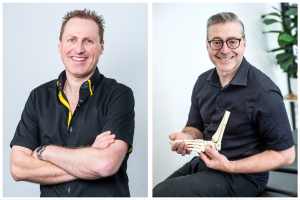
And this is why having an assessment with a skilled and experienced clinician, is vital to determining if Foot Mobilisation Therapy is the right option for you. Currently we’re running a $39 complete initial consultation special and as a result you’ll only pay $39 for the initial assessment (normally $107) saving you $68.
So, if you want your foot pain gone and you don’t want to have to wear orthotic insoles all the time, then Foot Mobilisation Therapy could be the solution you are looking for.

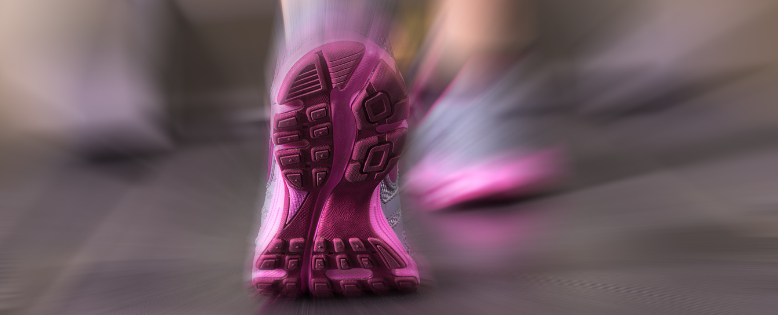




No comments yet.